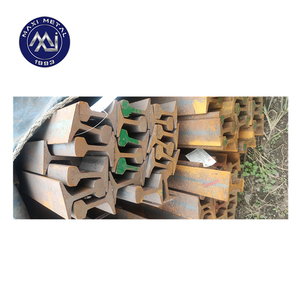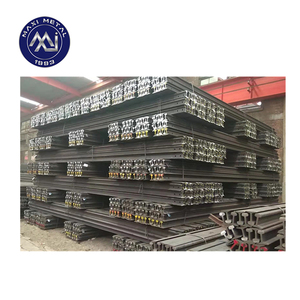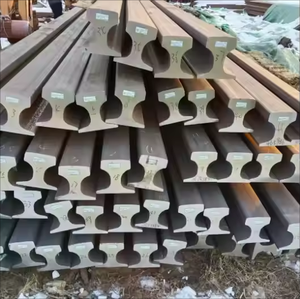(1498 products available)





















































































































































































A metro rail system, also known as a rapid transit or subway system, is a type of urban public transportation. It typically operates on an electric train system running in underground tunnels, exclusive tracks, or elevated railways within city areas. Metro rail systems are established in major cities worldwide, including New York City, London, Paris, Tokyo, and many others.
Metro rail systems transport large numbers of passengers quickly, efficiently, and reliably. They are an essential part of urban public transportation infrastructure. They help reduce traffic congestion, air pollution, and dependence on fossil fuels. Different metro rail systems may have varying names, technologies, and operational details. Here are some standard metro rail types:
Conventional Metro Rail
A conventional metro rail system is a type of urban public transportation. It typically uses electric trains running on steel tracks. These trains are powered by electricity supplied through overhead wires or third rails. Conventional metro systems have some key characteristics.
They usually have trains that run at speeds between 30 and 50 miles per hour. They have multiple carriages that can be coupled together to increase capacity. They also have stations located underground, elevated, or at-grade (street level) based on the city's layout.
Light Metro Rail
A light metro rail system is a type of urban public transportation. It typically uses lighter-capacity trains than conventional heavy rail metro systems. They are designed for lower passenger volumes and costs. Light metro systems have some unique characteristics. They include smaller, lighter trains, often with only one or two carriages.
They run at speeds similar to conventional metros, usually between 30 and 50 miles per hour. Light metros are often more flexible in their infrastructure. For instance, they can operate on street-level tracks, elevated sections, or light rail systems.
Maglev Metro Rail
Maglev (magnetic levitation) metro rail systems are a type of urban transportation. They use magnetic levitation technology to lift and propel trains along the tracks. This allows them to move without touching the ground. Maglev systems have some important features. For instance, they have high-speed trains that can reach much faster than conventional metro trains. Currently, operational maglev trains exceed speeds of 60 mph and may reach speeds of up to 300 mph in the near future.
As mentioned, metro rails are also known as subways, undergrounds, or urban railways. These are electric trains running on tracks, usually in urban areas. Here are some key features and functions of metro rails:
High Capacity:
Metro trains are designed to carry large numbers of passengers. This is essential for crowded cities. Each train has many carriages, and each carriage can hold hundreds of people. During busy times, several trains run close together to transport even more passengers.
Frequent Service:
Metro systems provide trains very often, especially during rush hours when many people travel to work or home. In some cities, trains may come every few minutes. This means riders do not have to wait long times. The regular schedule and timely trains make the metro a reliable choice.
Electrified Tracks:
Metro trains get their power directly from the tracks. This is safer for urban areas because it reduces the chances of sparks. The trains run smoothly and quietly, which is better for neighborhoods along the route.
Multiple Lines:
Many metro systems have several lines that travel different routes across the city. This gives passengers options for how to reach their destinations. People can transfer between lines at stations if needed. Having multiple lines helps serve the transportation needs of a large metropolitan area efficiently.
Underground and Overground Sections:
Not all metro systems are entirely underground. Some lines travel through tunnels below the ground in high-density areas. Other lines may be overground on elevated tracks or street-level in less crowded sections. Whether underground or overground depends on the route's surroundings.
High-Density Urban Transport:
Metrorail is particularly important for cities with many people living closely together. It helps move large numbers of passengers efficiently within the urban space. This reduces traffic jams and pollution caused by cars. The trains allow for smooth travel between different parts of a densely populated city.
Smart Ticketing and Scheduling:
Modern metros use advanced technology for tickets and train management. Smart cards make paying for rides quick and easy. Computer systems monitor trains and control their timing. This automation leads to better accuracy and efficiency in operations.
The metro rail system is a vital component of urban infrastructure, providing efficient and reliable transportation in densely populated areas. Its usage scenarios extend beyond traditional passenger transport, offering various applications and benefits to different stakeholders. Here are some common usage scenarios of the metro rail system:
Urban Commuting
Regular Passenger Travel: The metro rail serves as a primary mode of transportation for daily commuters traveling to work, school, and other urban destinations.
High-Capacity Transport: It can carry thousands of passengers per hour, reducing road congestion and travel times in busy urban areas.
Emergency Services
Emergency Evacuations: In crises, such as natural disasters or terrorist attacks, the metro can quickly evacuate large numbers of people.
Emergency Responders Access: Emergency services can utilize metro rail systems for rapid response and transportation in emergencies.
Tourism and Recreation
Tourist Transportation: Metro systems in cities with high tourist traffic offer convenient transportation to major attractions and destinations.
Leisure Travel: Residents and visitors use the metro for recreational trips to parks, events, and other leisure locations.
Freight and Cargo Transport
Goods Transportation: Some metro systems have dedicated lines or compartments for transporting goods and freight within the city.
Last-Mile Delivery: Metro rail can facilitate last-mile delivery of products, reducing traffic congestion and delivery times.
Access for Diverse Demographics
Accessibility: Metros cater to individuals with disabilities and mobility challenges by providing accessible stations and trains.
Transport for Seniors and Youth: Metro systems offer affordable transportation options for senior citizens and young people, enhancing their accessibility.
Integration and Intermodality
Multimodal Transportation: Metro rail integrates seamlessly with other transport modes, such as buses, trams, and trains, facilitating smooth transfers.
Transport Hubs: Metro stations serve as transport hubs where passengers can easily switch between different modes of transportation.
Technology and Innovation
Smart Metro Systems: Advanced technologies like AI, IoT, and data analytics enhance operations, improve efficiency, and provide personalized passenger information.
Automation and Driverless Operations: Some metro systems have fully automated trains, improving safety and reducing operational costs.
Environmental Benefits
Sustainable Urban Mobility: Metro rail promotes sustainable transportation by reducing greenhouse gas emissions and energy consumption.
Reduced Congestion: A shift from private vehicles to metro rail reduces traffic congestion, leading to less idling and vehicle emissions.
Capacity and Demand:
Analyze the anticipated number of passengers. Higher passenger demand calls for longer trains with more carriages. Various capacities should be available to meet different levels of demand in the metro rail system.
Infrastructure and Technology:
Assess the existing metro infrastructure, such as tracks and stations. Ensure the train model is compatible with this infrastructure. Look into advanced technologies like automatic train control and signaling. These enhance efficiency and safety.
Cost and Funding:
Consider the total cost of ownership, including purchase, maintenance, and operation expenses. Find a balance between quality and cost-effectiveness. Look for trains that offer long-term savings without compromising performance. Explore financing options like public-private partnerships or government grants. These can help lessen the financial burden of procuring new metro trains.
Environmental Concerns:
Choose sustainable solutions that reduce the carbon footprint. Consider electric or hybrid trains that use renewable energy. Energy-efficient trains lower operating costs and benefit the environment. Comply with regulations that promote environmentally friendly public transportation. Meeting these rules shows commitment to sustainability and social responsibility.
Customization and Flexibility:
Select trains that can be tailored to meet specific needs, such as interior design and technology features. This adaptability ensures long-term satisfaction. Choose a model that can adjust to changing demands over time. Flexibility in operations is vital as urban populations and transportation needs grow and change.
Reliability and Maintenance:
Pick trains from manufacturers with a proven record of dependable products and strong customer support. A reliable train ensures smooth operations. Consider the ease of maintenance and availability of spare parts. Trains that require less maintenance time and resources are more economical in the long run.
Q1: What are the future trends in metro rail systems?
A1: Future trends may include the adoption of advanced technologies such as artificial intelligence for predictive maintenance, automated and driverless trains, smart ticketing solutions like contactless payment systems, and integration with other modes of transportation. Additionally, there may be a greater emphasis on sustainability through energy-efficient trains and green station designs.
Q2: How can someone start a metro rail project?
A2: Starting a metro rail project involves conducting feasibility studies, securing funding, and engaging stakeholders. It requires extensive planning, including route mapping, technology selection (e.g., elevated vs. underground), and impact assessments. Collaboration with government bodies and transportation experts is crucial.
Q3: What are the challenges in operating a metro rail system?
A3: Common challenges include managing operational efficiency, ensuring passenger safety, and maintaining infrastructure. Other challenges may involve dealing with technical issues, meeting the demands of a growing passenger base, and securing consistent funding. Additionally, aging infrastructure in established systems can pose challenges.
Q4: Are metro rails a sustainable mode of transportation?
A4: Yes, metro rails are generally considered a sustainable mode of transportation. They can move large numbers of people efficiently, reducing traffic congestion and lowering greenhouse gas emissions compared to individual car travel. Many metro systems are also adopting sustainable practices, such as energy-efficient trains and solar-powered stations.
Q5: What is the process of metro rail construction?
A5: Metro rail construction involves several key stages: planning and design, land acquisition and stakeholder engagement, construction of tracks and stations, installation of signaling and communication systems, and testing and commissioning. It's a complex process that requires careful coordination and project management.